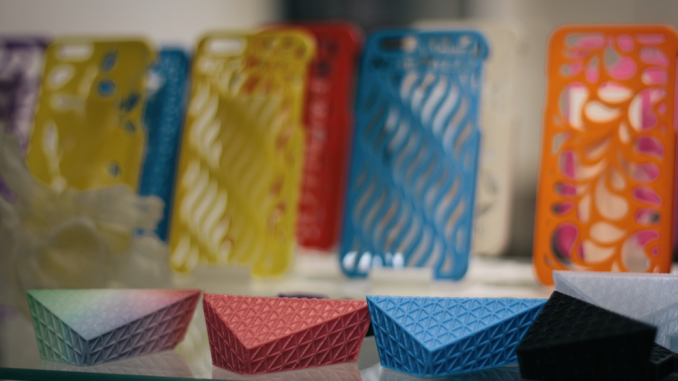
The Schools of Fine and Performing Arts and Science and Engineering have come together to create a minor for people of all disciplines: digital design and fabrication (DDF).
According to the SUNY New Paltz webpage, DDF “prepares students to conceptualize and design for 21st century manufacturing.” With the two schools collaborating, the minor introduces students to a combination of expertises including design theory, aesthetics and 3D modeling skills. In addition, the minor offers students the opportunity to learn more about material properties and constraints while applying analytical approaches to problem solving.
Aaron Nelson, an assistant professor of DDF as well as one of the faculty members who spearheaded the new minor, said that it allows students of any major to access emerging tools in the design and fabrication fields, teaching them how to make objects in the 21st century.
“The DDF minor is a way of democratizing these tools to the student body of SUNY New Paltz,” he said. “In a lot of ways, it’s a really special thing. We’re one of the first colleges in the country to have a design minor like this.”
In terms of this technology, Nelson said SUNY New Paltz is now up in the ranks with universities like Massachusetts Institute of Technology and University of California, Berkeley, two of the first large schools to offer advanced manufacturing minors to their students.
“In a really cool way, we’re at this small liberal arts university here in the Hudson Valley and we’re at the cutting edge of this technology,” he said.
Nelson feels that being interdisciplinary is one of the main strengths of the minor program, bringing many new viewpoints and ideas from different areas of study to expand the future of 3D printing and advanced manufacturing.
“The students are going to come from so many varied backgrounds that they will actually teach us new ways that this kind of technology can interact,” he said. “I’m not a social scientist, I’m not an anthropologist, I’m not a mathematician, but the students who come from those areas may have ideas about how this technology can apply to what they’re learning and it can inform what we do. It’s not just a one-sided ‘you’re-gonna-learn-this-from-us.’ We’re going to learn from the student body as well, and that’s really exciting.”
Danielle Epstein, a third-year metal major-cum-DDF-minor, believes that the sciences and the arts are much more similar than people are led to believe. She is a strong believer in STEAM rather than STEM, including arts into the science, technology, engineering and math areas of study.
“The DDF minor allows me to work with people outside of my degree,” she said. “It’s really wonderful in a class setting to work with people from other backgrounds, because some really interesting things happen when other people who might be thinking of something completely different help you out with ideas.”
Jeni Mokren, Dean of the School of Fine and Performing Arts, said that the DDF minor is beneficial for students both studying the arts or sciences. In this, students in the Fine and Performing Arts school now have access to engineering, programming and coding that they wouldn’t otherwise have in their art, design or theatre tech classes. For students from the School of Science and Engineering who may have more experience with technics and understanding structure and how certain materials work, they have the benefit of learning more about design and aesthetics.
“I think one thing that the schools have in common is curiosity and creativity,” she said. “With the sciences, this is often overlooked. This minor creates a way for us to actually engage that common ground.”
The DDF minor is an 18-credit plan of study, according to the website, and offers courses including Computer Aided Design I (CAD I), CAD II, Introduction to Computational Media, Material Studies, Making Things Move and Design Intents.
